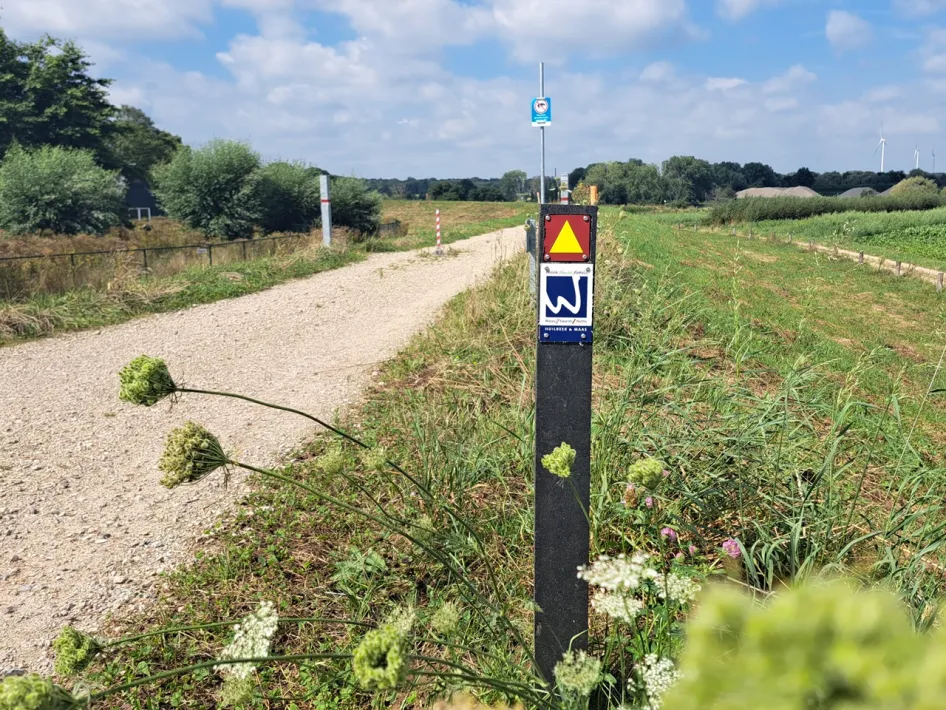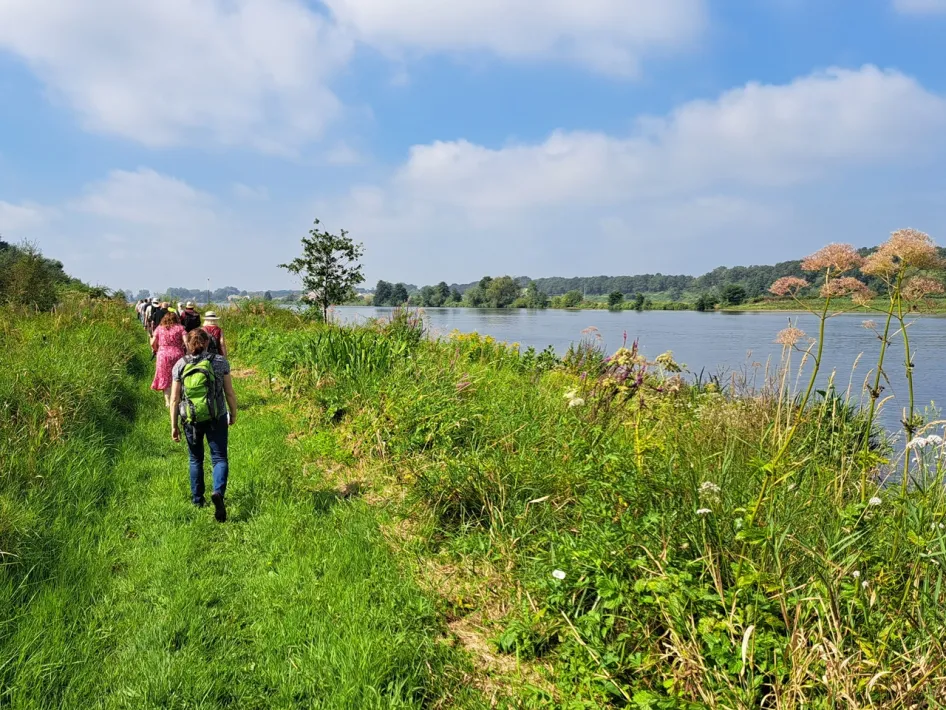Walking along river and stream
You follow unpaved paths along the Maas and the Huilbeek. The soil here was shaped by deposits from the ancient Rhine, with layers of sand, clay and gravel. The contrast between the open river landscape and the wooded areas around Beesel is especially striking.
Heritage, stories and views
Along the route lies Castle Nieuwenbroeck, built in the 16th century and surrounded by a wide moat. You also pass Fort St. Brigitte, an earthwork from the Eighty Years’ War. A plaque in the village recalls the historic ferry between Beesel and Kessel, which has existed since 1364. On the cemetery grounds are the remains of a church from 1157, with rare wall plants such as yellow corydalis growing against the old masonry. Ceramic artworks by Piet Schoenmakers decorate the church square.
Flora and fauna along the water
The wet valleys and old river branches of the Maas are rich in flowers, herbs and shrubs. Foxes, hares and badgers roam the area. Beavers are active in an old river arm near De Weerd, where a frog pond can also be found. Bat boxes hang in a nearby birch grove, and nesting boxes for cavity-nesting birds are installed near the pond. An insect hotel helps support populations of bees, spiders and other insects.
Practical tip for high water
Both the trail along the Maas and a section by the Huilbeek may be inaccessible during high water. These parts can easily be bypassed using the parallel cycle path or an alternative sand or dike path.


